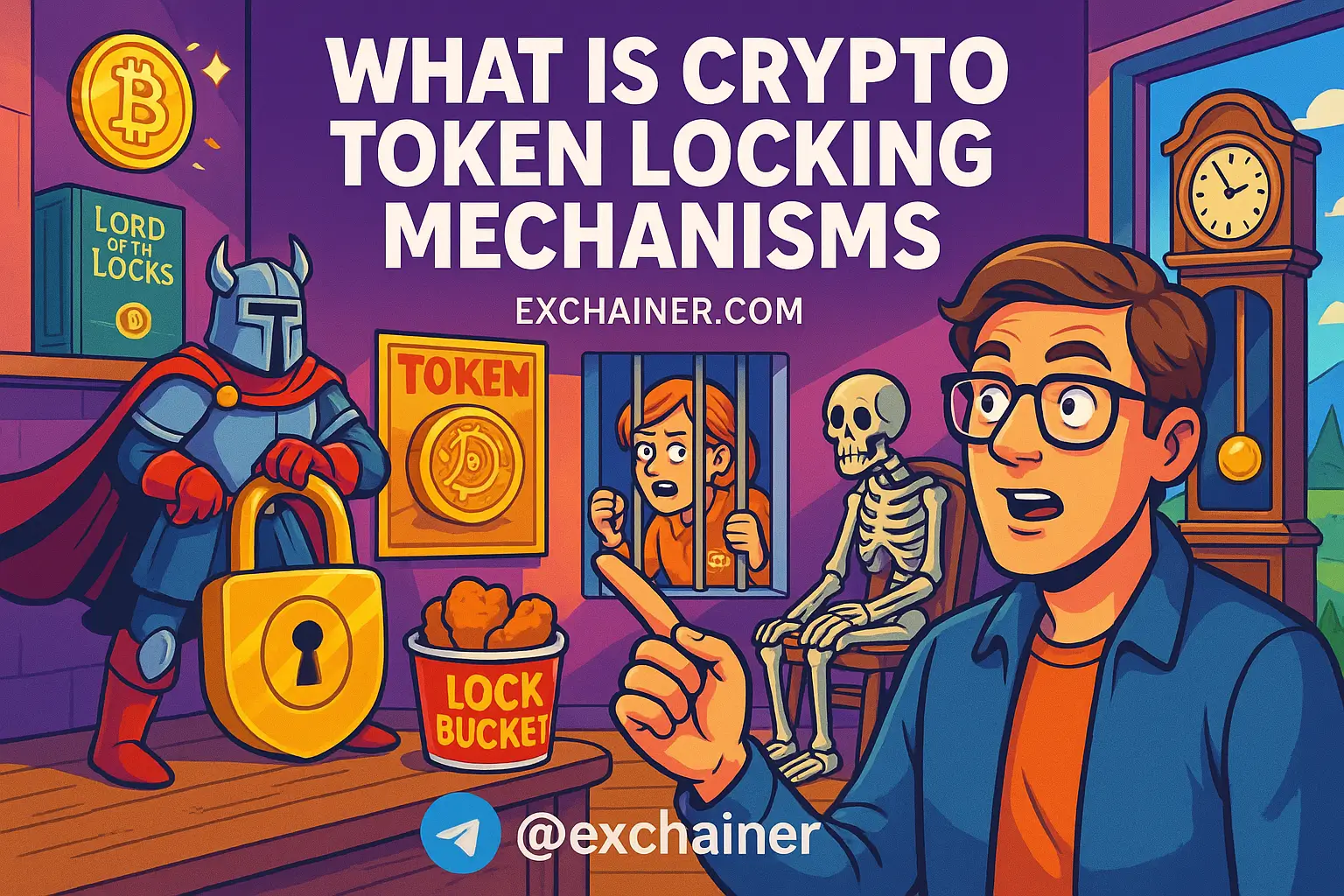A crypto fork is an essential concept in the world of cryptocurrency that every enthusiast should understand. When we talk about cryptocurrency basics, forks play an integral role in how blockchain technology evolves. Essentially, a crypto fork happens when the blockchain network splits into two distinct paths due to changes in its protocol or rules. Why should you care about this topic? Because forks can lead to the creation of new cryptocurrencies, impact user participation, and even change the dynamics of existing crypto networks. In this guide, we will break down what a crypto fork is, why it occurs, its different types, and some notable examples. Whether you’re a beginner or someone looking to deepen your knowledge, understanding forks is vital for navigating the cryptocurrency landscape.
In a world where digital currency is rapidly evolving, knowing the ins and outs of crypto forks can enhance your trading strategies and investment decisions. Forks are not just technical jargon; they have real-world implications, affecting not only how transactions are processed but also the value of the cryptocurrencies involved. As we dive into this topic, you will gain insights that can empower you in your crypto journey. So, let's get started!
What Is a Crypto Fork?
A crypto fork occurs when a community or developers make changes to the blockchain’s protocol—the underlying set of rules that govern how transactions and data are processed. Blockchains are essentially open-source software maintained by decentralized communities. This means that when a modification to the protocol is introduced, it can lead to a split in the blockchain into two separate paths. Both blockchains will share the entire transaction history up to the fork point, but they will diverge based on the new rules applied post-fork.
There are mainly two types of forks: intentional and unintentional.
- Intentional forks happen when developers deliberately change the blockchain’s code to upgrade functionality, fix vulnerabilities, or add new features.
- Unintentional forks can occur by accident. For example, this can happen when two miners produce blocks simultaneously, resulting in two competing chains. Eventually, the network resolves which chain is the main one by following the longest chain rule.
Understanding this mechanism helps us grasp how cryptocurrencies continue to evolve and adapt to the changing landscape of digital money.
Why Do Forks Happen?
The reasons for forks are diverse but generally revolve around the need for improvement in the crypto ecosystem. Here are the main factors:
- Improving Functionality: Developers consistently work to improve blockchain protocols to enhance aspects like scalability, security, and user experience.
- Addressing Security Vulnerabilities: When security flaws are discovered, forks can introduce necessary patches.
- Resolving Community Disputes: When there are disagreements among stakeholders about how the protocol should function, a fork can create a new path reflecting the differing views.
- Creating New Cryptocurrencies: Forks can also give birth to entirely new cryptocurrencies, adding to the existing market.
Types of Crypto Forks
Understanding the various types of crypto forks is crucial for anyone interested in the cryptocurrency world.
Soft Fork
A soft fork is a backward-compatible upgrade to the blockchain protocol. This means it introduces new rules that tighten or restrict the network while still being compatible with older nodes. For instance, if a soft fork is implemented, nodes that have not upgraded can still recognize and validate new blocks. However, they may not be able to utilize the new features that come with the upgrade.
Soft forks usually function like software upgrades and commonly require a majority consensus within the network to be adopted. An example of this is the Segregated Witness (SegWit) upgrade implemented in Bitcoin, which improved the block size limit without creating a new blockchain.
Hard Fork
In contrast to a soft fork, a hard fork is a radical protocol change that is not backward-compatible. Nodes operating on the previous version will not accept blocks created under the new rules, leading to a permanent split in the blockchain. After a hard fork, two distinct blockchains will emerge, each following different sets of rules.
Hard forks can arise from fundamental disagreements about the network direction or upgrades that cannot be implemented compatibly. Notable examples of hard forks include:
- Bitcoin Cash (2017): This fork was initiated to increase Bitcoin’s block size, allowing for more transactions per second, leading to a new cryptocurrency while Bitcoin retained its original features.
- Ethereum and Ethereum Classic (2016): This was a response to the DAO hack, where Ethereum hard forked to reverse the hack's effects. Some community members, however, rejected the fork, choosing to continue on the original Ethereum Classic chain.
- Bitcoin Gold: This aims to decentralize mining by changing the proof-of-work algorithm employed by Bitcoin.
Other Fork Classifications
In addition to soft and hard forks, there are two other classifications worth noting:
-
Source Code Fork (Project Fork): This is when developers take the existing source code of a cryptocurrency and independently develop it without necessarily maintaining backward compatibility. A few examples include Litecoin (forked from Bitcoin) and Dogecoin (forked from Litecoin).
-
Accidental Forks: These temporary splits usually occur under network congestion conditions when multiple miners find blocks simultaneously. The network typically resolves these quickly, discarding the shorter chain as orphaned.
Implications of Forks
Forks can have various implications for users, investors, and the developer community.
For Users and Investors
- Holding Coins: When a hard fork occurs, users holding the original cryptocurrency typically receive an equivalent amount of the new coin, which can act as a form of "free money." However, the future value of these new coins can vary greatly based on adoption and community support.
- Upgrading Necessity: To continue using the updated blockchain after a fork, users and nodes must upgrade their software.
- Security Risks and Market Volatility: Hard forks can lead to market fluctuations, and community rifts may arise, especially when the vision for the blockchain significantly shifts.
For Developers and Communities
- Forks embody the decentralized governance ethos of blockchain technology.
- They enable blockchains to adapt and innovate as user needs and threats evolve.
- However, forks can fragment communities and development efforts, which may weaken the broader ecosystem.
Recap: Forks in a Nutshell
For a quick refresh, here’s a simple table breaking down the key aspects of crypto forks:
| Aspect | Soft Fork | Hard Fork | Source Code Fork |
|---|---|---|---|
| Compatibility | Backward compatible | Not backward compatible | Independent development |
| Blockchain Outcome | Single blockchain | Two separate blockchains | New independent blockchain |
| User Action | Upgrade recommended | Upgrade required | New project/community forms |
| Effect on Community | Less disruptive | Potentially divisive | Entirely new project with shared code |
| Examples | Bitcoin SegWit upgrade | Bitcoin Cash, Ethereum Classic | Litecoin, Dogecoin, Monero |
Conclusion
A crypto fork serves as a vital mechanism for the evolution and innovation of blockchain networks. By understanding the differences between soft forks and hard forks, users can better navigate the cryptocurrency landscape and make informed decisions. While forks can introduce controversy and division, they also empower communities to make choices reflecting their vision for the future of their cryptocurrencies.
If you're looking to stay updated on forks and their implications, or want to expand your knowledge about cryptocurrency in general, be sure to explore more guides on Exchainer.com. Whether it’s diving deeper into crypto basics, checking out exchange reviews, or catching up with the latest news, we have a lot in store for you. So, start your crypto journey today!












